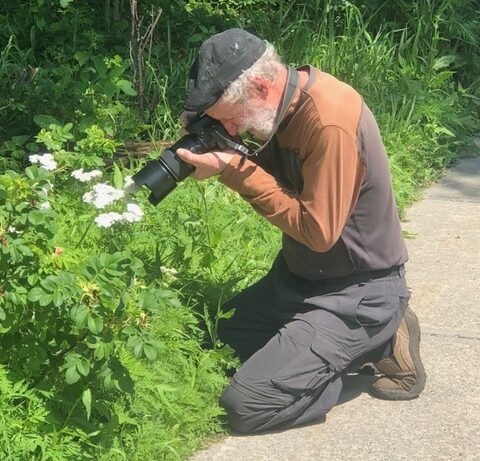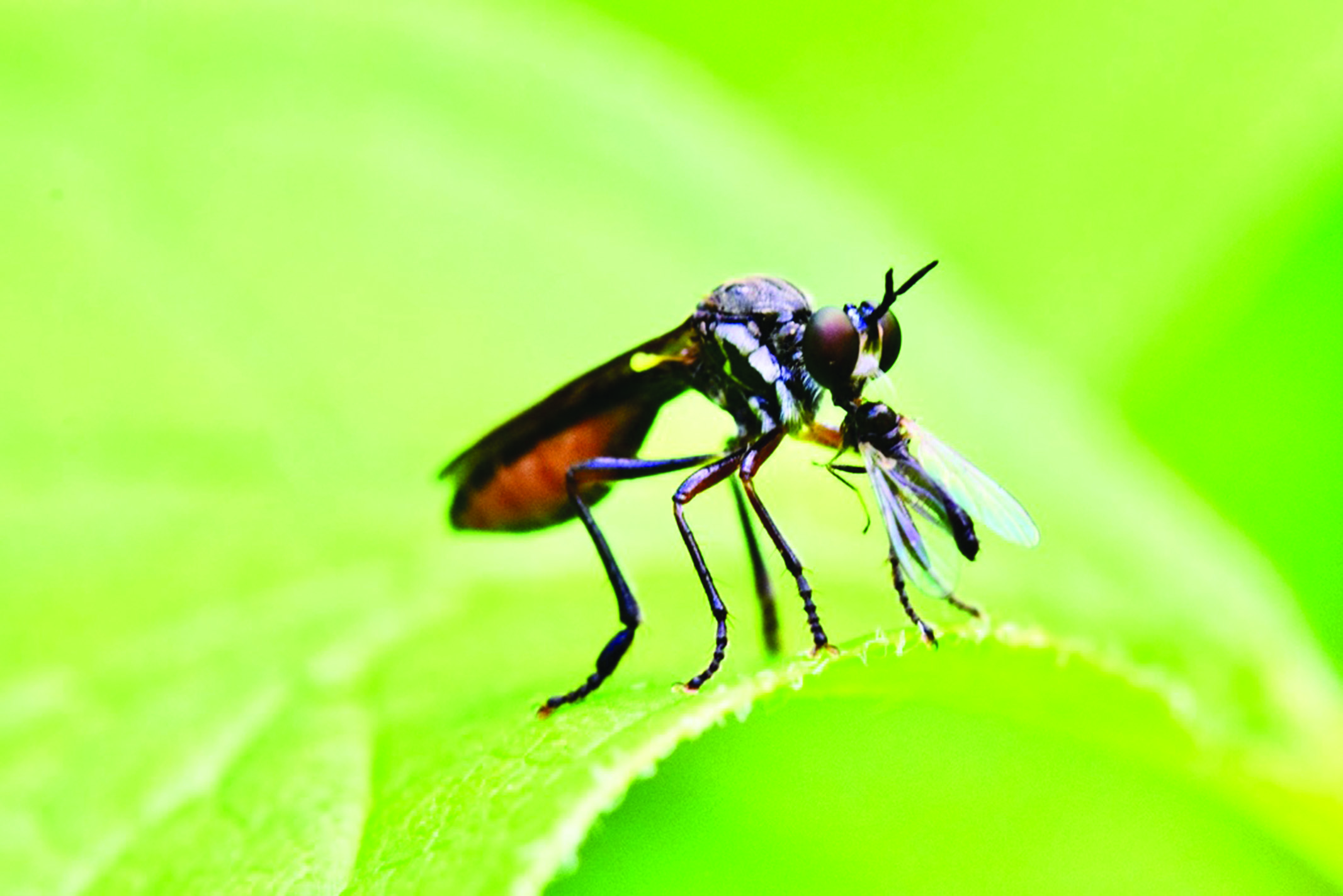
Bernie inverting © Chuck Lacy
VCE bee biologist Spencer Hardy first met Bernie Paquette at the 2019 Jericho-Underhill Christmas Bird Count. Paquette had long since retired from his career at IBM in Essex Junction, but had only recently caught the naturalist bug at a 2016 walk hosted by Alicia Daniel, a University of Vermont instructor and director of the Vermont Master Naturalist Program.
Soon after, Hardy noticed that his neighbor (Bernie lives about two miles away) was uploading an astounding number of bee observations to iNaturalist, where he goes by BugEyedBernie.
Since those humble beginnings, Paquette has become the top bee observer in the world by number of iNat observations—more than 12,000, with 6,800 of them high-quality-enough photos to be research grade. He’s also contributed to every invertebrate-related community science project at VCE, including Pollinator Interactions on Plants led by VCE biologist Desirée Narango and the Vermont Bee Checklist compiled by Hardy with his colleagues Kent McFarland and John Ascher.
“He found the first state record of the Mock-orange Scissor Bee which wasn’t even really on my radar,” Hardy says. “And it showed up in his yard.”
We’re not the first to publicly note Paquette’s devotion to the fascinating world of invertebrates. The Vermont publication Seven Days profiled him in June of this year, noting he spends up to eight hours a day photographing butterflies, flies, moths, wasps, bees, caterpillars, and more with his standard digital camera and macro lens.
“Because he puts so much time and also care into taking high-quality photographs for documentation, he’s increased our observations for a lot of uncommon and rare species that we don’t have a lot of data for,” says Narango.
Paquette keeps a blog at vtbugeyed.blogspot.com where he shares his astoundingly detailed macrophotography of insects, from solitary bees digging ground nests to an Asian Lady Beetle chowing down on aphids. He calls the world of insects “the Greatest Show on Earth—an immense world of small, extraordinary wonders. And the best part? The show takes place as close as our backyards.”

Stripe-legged Robber Fly (Dioctria
hyalipennis) eating its prey © Bernie Paquette
At the regional level, Paquette’s observations have significantly expanded knowledge of invertebrate phenology (a species’ seasonal timing) and made it possible to model the northeastern distribution of Vermont’s more rare insects.
“I find seeking insects is like treasure hunting, and observing their behavior is like going on a wild safari,” he says.
Paquette also encourages others to contribute observations to iNaturalist. In 2022, he ran a nature photo contest in Jericho, receiving 566 entries. He’s organized native plant sales and, with other volunteers, facilitates monthly, family-friendly nature walks around Jericho.
His partner Maeve Kim leads birding classes and walks, and posts on their Vermont Birds and Words blog, while Paquette offers bug safaris to anyone interested in seeing what is on their own property. He calls going out looking for bugs “inverting.”
Though relatively new to the world of invertebrate biology, Bernie Paquette’s contribution to our science and enthusiastic promotion of all things insects has earned him this year’s Julie Nicholson Community Science Award.
“I believe that inverting will soon be the new birding,” Paquette wrote in an email accepting the award. “I hope to help lift this quiet, crawling, humming world into the public eye.”
Read the entire Fall 2025 issue of Field Notes, fresh off the press, here. If you would like to receive a physical copy of the magazine, email .
